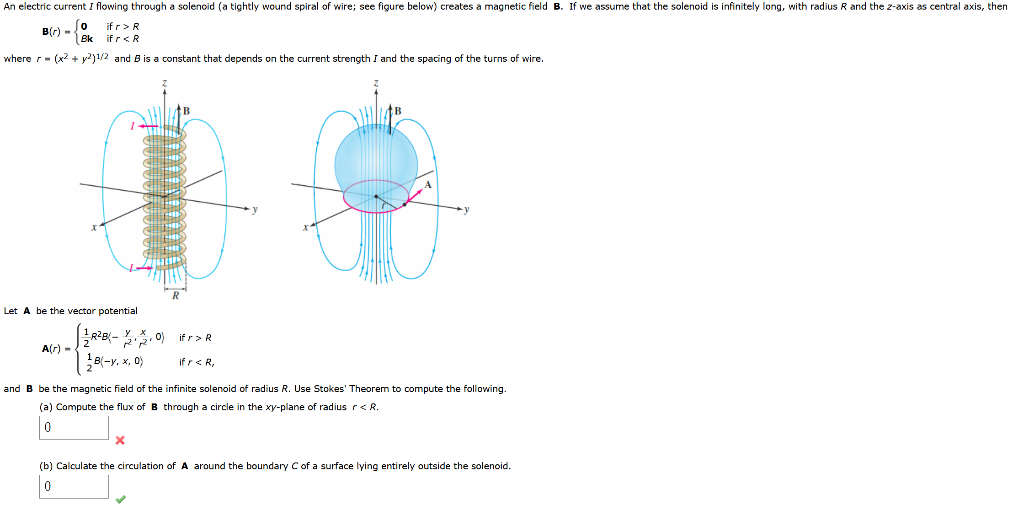An electric current I flowing through a solenoid (a tightly wound spiral of wire; see figure below) creates a magnetic field B. If we assume that the solenoid is infinitely long, with radius R and the z-axis as central axis, then if r>R B(r) - Jo Bk if r
An electric current I flowing through a solenoid (a tightly wound spiral of wire; see figure below) creates a magnetic field B. If we assume that the solenoid is infinitely long, with radius R and the z-axis as central axis, then if r>R B(r) - Jo Bk if r
Related questions
Question

Transcribed Image Text:An electric current I flowing through a solenoid (a tightly wound spiral of wire; see figure below) creates a magnetic field B. If we assume that the solenoid is infinitely long, with radius R and the z-axis as central axis, then
if r>R
B(r) - Jo
Bk
if r<R
where r- (x? + y?)1/2 and B is a constant that depends on the current strength I and the spacing of the turns of wire.
Let A be the vector potential
A(r) -
B(-y, x, 0)
If r< R,
and B be the magnetic field of the infinite solenoid of radius R. Use Stokes' Theorem to compute the following.
(a) Compute the flux of B through a circle in the xy-plane of radius r< R.
(b) Calculate the circulation of A around the boundary C of a surface lying entirely outside the solenoid.
Expert Solution
This question has been solved!
Explore an expertly crafted, step-by-step solution for a thorough understanding of key concepts.
This is a popular solution!
Trending now
This is a popular solution!
Step by step
Solved in 3 steps with 3 images
